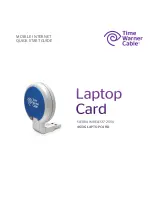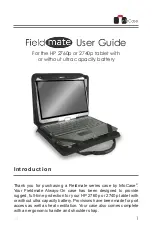
100
SDRAM
Synchronous Dynamic Random Access Memory.
Serial Port
A connection to another device through which data is transferred one bit at a time on a single wire
with any other wires only for control of the device not for transfer of data.
Shadow RAM
A technique of copying data or applications stored in ROM (Read Only Memory) into RAM (Random
Access Memory) for access during actual operation. RAM is much faster to access than ROM, however
ROM contents are not lost when power is removed. Shadowing allows permanently stored information
to be rapidly accessed.
SMART
Self-Monitoring, Analysis and Reporting Technology (SMART) is an emerging technology that provides
near-term failure predictions for hard drives. When SMART is enabled the hard drive monitors
predetermined drive attributes that are susceptible to degradation over time. If a failure is likely to
occur. SMART makes a status report available so that the LifeBook can prompt the user to back up
the data on the drive. Naturally not all failures are predictable. SMART predictability is limited to those
attributes which the drive can self-monitor. In those cases where SMART can give advance warning,
a considerable amount of precious data can be saved.
SRAM
Static random access memory. A specific technology of making RAM which does not require periodic
data refreshing.
Status Indicator
A display which reports the condition of some portion of your hardware. On your notebook this is an
LCD screen just above the keyboard.
Stereo (audio)
A system using two channels to process sound from two different sources.
Stroke (keyboard)
The amount of travel of a key when it is pressed from resting to fully depressed.
Suspend
To make inoperative for a period of time. Your notebook uses various suspension states to reduce
power consumption and prolong the charge of your battery.
SVGA
Super VGA.
S-Video
Super Video. A component video system for driving a TV or computer monitor.




































